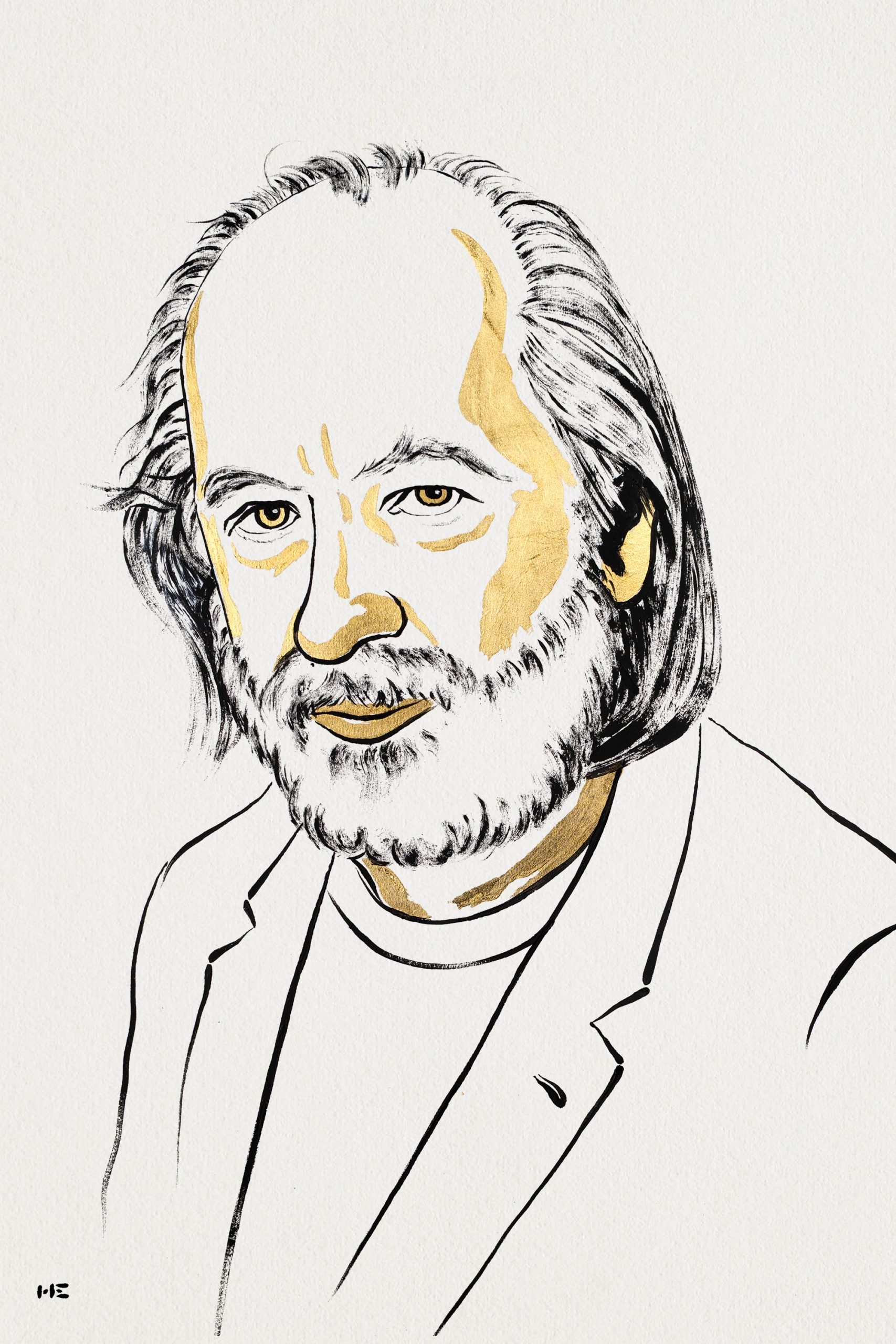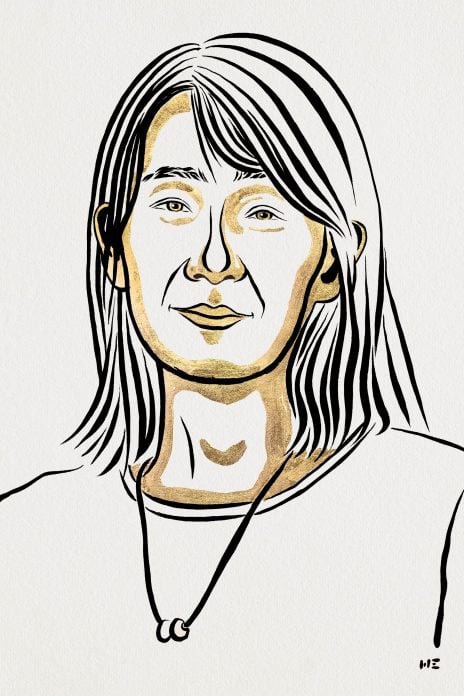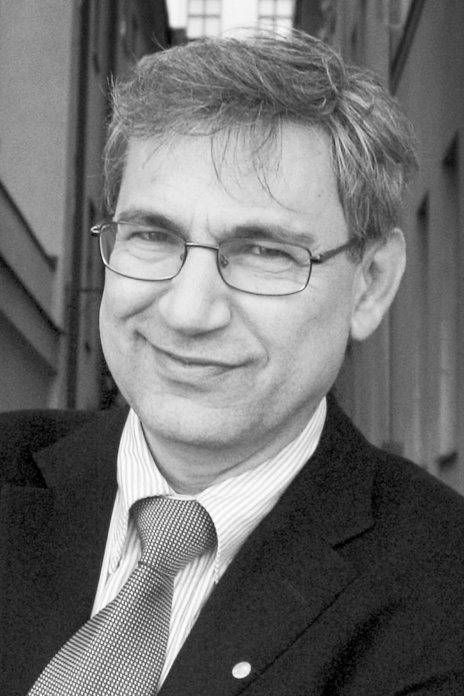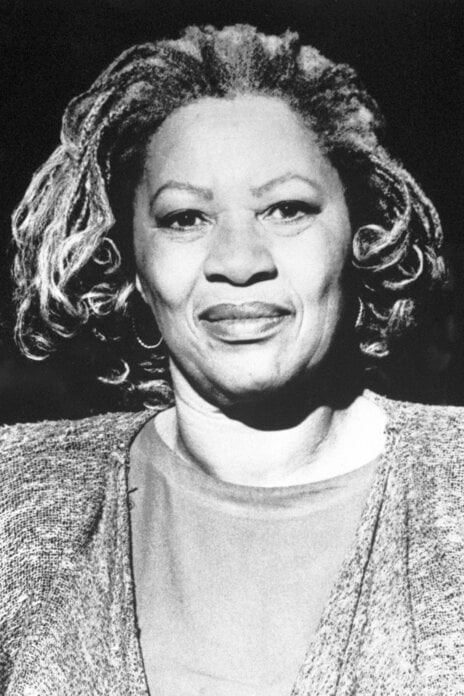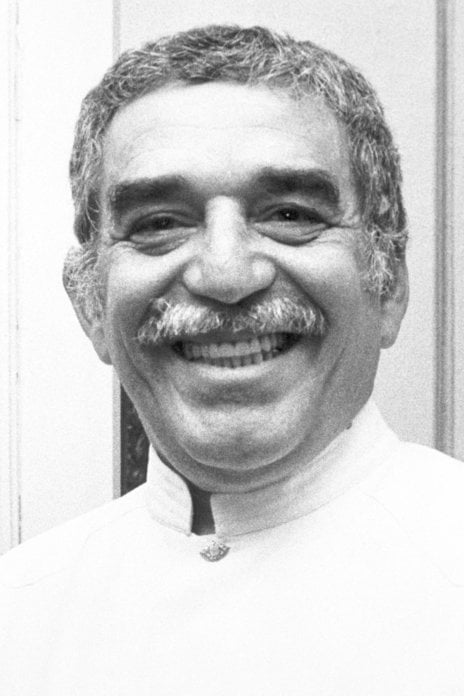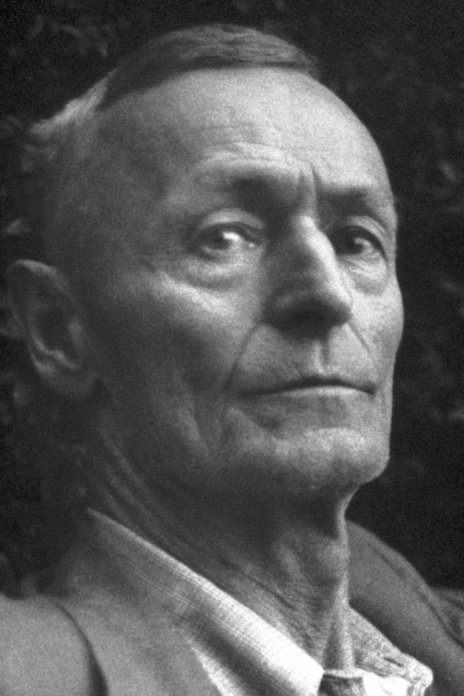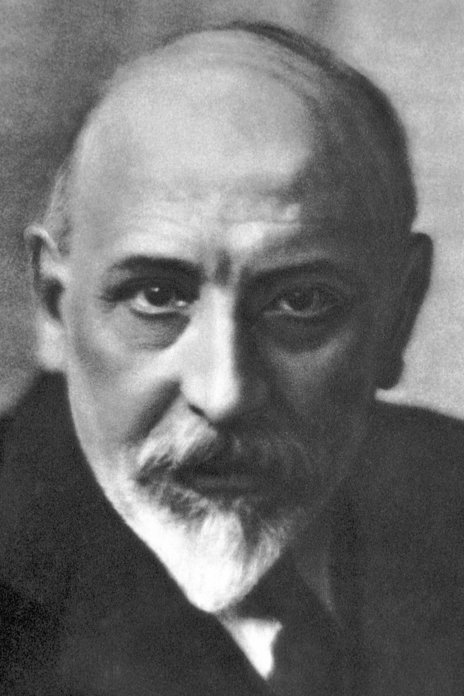2025 - László Krasznahorkai
"for his compelling and visionary oeuvre that, in the midst of apocalyptic terror, reaffirms the power of art"
2024 - Han Kang
"for her intense poetic prose that confronts historical traumas and exposes the fragility of human life"
Han Kang began her career in 1993 as a poet, but has since written mainly novels and short stories. In her oeuvre, she confronts historical traumas and invisible sets of rules and, in each of her works, exposes the fragility of human life. She has a unique awareness of the connections between body and soul, the living and the dead, and in her poetic and experimental style has become an innovator in contemporary prose. Among her works are The Vegetarian, Human Acts and We Do Not Part.
2017- Kazuo Ishiguro
"who, in novels of great emotional force, has uncovered the abyss beneath our illusory sense of connection with the world".
Kazuo Ishiguro was born in Nagasaki, Japan. When he was five, the family moved to Guildford in Surrey, England, where his father, an oceanographer, had been invited to work at a research institute. In his youth Kazuo Ishiguro first wanted to become a musician, but he studied English and philosophy at the University of Kent and then creative writing at the University of East Anglia, where he earned a master’s degree in 1980. Since then he has worked as a writer. Kazuo Ishiguro is married and has a daughter. Memory, time and lifelong deception are central themes in Kazuo Ishiguro’s works. Growing up in a Japanese family in Great Britain has colored his thinking and perspectives. His first two novels are set in Japan. His most celebrated work, The Remains of the Day, published in 1989, is about an English butler and his feelings for a housekeeper at the time around World War II. In later works Ishiguro approached genres such as fantasy and science fiction. His language is characterized by restraint, even when dramatic events are portrayed.
2014 - Patrick Modiano
“for the art of memory with which he has evoked the most ungraspable human destinies and uncovered the life-world of the occupation”.
Patrick Modiano was born in Boulogne-Billancourt outside Paris. His father was a businessman and his mother an actor. They met in Paris during the German occupation during World War II. After growing up with his grandparents and having received Flemish as their first language, Modiano studied at the Lycée Henri IV in Paris and took private lessons in geometry from the writer Raymond Queneau, who came to play a crucial role in the development of Modiano as a writer. He debuted as an author in 1968. Patrick Modiano is married and has two daughters. Good stories are often characterized by their exploration of universal but difficult questions, at the same time as they are grounded in everyday settings and historical events. Patrick Modiano’s works center around subjects like memory, oblivion, identity, and guilt. The city of Paris plays a central role in his writing, and his stories are often based on events that occurred during the German occupation of France during World War II. At times, Modiano’s stories are based on his own experience or on interviews, newspaper articles, or his own notes.
2007 - Doris Lessing
“that epicist of the female experience, who with scepticism, fire and visionary power has subjected a divided civilisation to scrutiny”.
Doris Lessing was born in Kermanshah, Persia (now Iran). Her father was a bank clerk and her mother a nurse. Her family later moved to Southern Rhodesia in 1925. Doris Lessing attended a convent school and a girls' school, but ended her studies at age 14 and moved from home. She went on to work as a nursemaid, telephonist, stenographer, and journalist, and published a few short stories. Lessing moved to London in 1949. She became involved in politics and social issues and actively took part in the campaign against nuclear weapons. Doris Lessing was married twice and had three children. Doris Lessing's body of work comprises around 50 books and spans several genres. Her writing is characterized by penetrating studies of living conditions in the 20th century, behavioral patterns, and historical developments. Her most experimental novel, The Golden Notebook, from 1962, is a study of a woman's psyche and life situation, the lot of writers, sexuality, political ideas, and everyday life. Some of Lessing's books reach into the future. Among other things, she portrays our civilization's final hour from the perspective of an extraterrestrial observer.
2006 - Orhan Pamuk
“who in the quest for the melancholic soul of his native city has discovered new symbols for the clash and interlacing of cultures”.
Orhan Pamuk grew up in an affluent, secular family in Istanbul . He began studies in architecture, but abandoned his education to become a writer. Orhan Pamuk has been faithful to his hometown, although he periodically has taught at American universities. Pamuk was charged in 2005 with having insulted the Turkish nation’s honor, but the indictment was later dismissed. Orhan Pamuk made his debut with the novel Cevdet Bey and His Sons in 1982. His international breakthrough came in the 1990s and was firmly established with My Name Is Red, which was published in 2000. Pamuk’s novels are characterized by the search for identity in the borderland between Western and Eastern values, an attempt to understand differences and similarities and an ambivalent yearning for both modern and old traditions.
1993 - Toni Morrison
“who in novels characterized by visionary force and poetic import, gives life to an essential aspect of American reality”.
Toni Morrison was born into a working-class family in Lorain, Ohio in the United States. She read a lot as a child and her father's stories, taken from the African-American tradition, later became an element in her own writing. Morrison has studied and taught English at several universities, including Howard University in Washington D.C. From 1964 she worked as a publishing house editor, and since her debut as an author in 1970, she has also held positions at several universities, including Princeton. Toni Morrison has two children from her marriage to Harold Morrison. Toni Morrison's works revolve around African-Americans; both their history and their situation in our own time. Morrison's works often depict difficult circumstances and the dark side of humanity, but still convey integrity and redemption. The way she reveals the stories of individual lives conveys insight into, understanding of, and empathy for her characters. Morrison's unique narrative technique has developed with each new work. Among her works are her debut novel, The Bluest Eye, Song of Solomon, and Beloved.
1982 - Gabriel García Márquez
“for his novels and short stories, in which the fantastic and the realistic are combined in a richly composed world of imagination, reflecting a continent's life and conflicts”.
Gabriel Garcia Marquez was born in Aracataca, Colombia. As a 13-year-old, he came to Bogotá to study in a secondary school. Later he began to study law, but abandoned these studies to work as a journalist and writer. During the 1950s and 1960s, he worked as a foreign correspondent in Paris, New York and elsewhere. In the late 1960s he left journalism to devote himself to his creative writing full-time. Eventually García Márquez settled in Mexico City, where he lived until his death. Gabriel García Márquez’s international breakthrough came with the novel Cien años de soledad (1967) (One Hundred Years of Solitude). He is one of the foremost interpreters of magical realism in literature, a genre in which the framework narrative is set in a real place and time, but supernatural and dreamlike elements are part of the portrayal. The novels El otoño del patriarca (1975) (The Autumn of the Patriarch) and El amor en los tiempos del colera (1985) (Love in the Time of Cholera) cemented his position as one of the greatest Latin American writers of all time.
1946 - Hermann Hesse
“for his inspired writings which, while growing in boldness and penetration, exemplify the classical humanitarian ideals and high qualities of style”.
As a young man, Herman Hesse ran away from education as a minister in the seminary at Maulbronn Monastery. A period of crisis and rebellion ensued before he began working in bookstores in Tübingen and Basel. He made his debut as a poet in 1896, and after the novel Peter Camenzind (1904), he was able to support himself as a writer. As a result of several personal tragedies, Hesse began to undergo psychoanalysis in 1916. The following year the novel Demian, full of Jungian archetypes and symbolism, was published. The book’s pervading theme is how people can accept the dualism between body and spirit. Herman Hesse’s writings are influenced by Francis of Assisi, Buddha, Nietzsche and Dostoyevsky. A recurring theme is the individual’s search for authenticity, spirituality and balance. Der Steppenwolf (1927) (Steppenwolf) deals with humankind’s ambivalence between instinct and spirit, freedom and piety. Das Glasperlenspiel (1943) (The Glass Bead Game, also published under the name Magister Ludi), a novel of ideas, depicts a mysterious intellectual order whose final test of knowledge and sense of beauty is a mysterious game with glass beads. The search for enlightenment is also a clear theme in the novel Siddhartha.
1934 - Luigi Pirandello
"for his bold and ingenious revival of dramatic and scenic art".
Luigi Pirandello grew up in a family with large investments in the mining industry. He received his elementary education at home and later earned a doctorate in philology. As a young man, Pirandello worked with his father at the family’s sulfur mines before marrying Antonietta Portulano. Major flooding of the mines in 1903 became an economic and personal disaster for the family. Pirandello donated his Nobel Prize medal to Italy’s fascist government to be melted down for the benefit of the Italian occupation and colonization of Ethiopia. Luigi Pirandello wrote over 100 short stories, about 40 plays and seven novels. His plays, which often contain both farce and tragedy, paved the way for the theater of the absurd in the 1950s. Pirandello’s plays explore psychology, the ego and identity issues. Today his experimental metaplay Sei personaggi in cerca d’autore (Six Characters in Search of an Author) is widely read and staged. However, audience reactions to the 1921 premiere created such an uproar that Pirandello was forced to leave the theater through a side exit.
1930 - Sinclair Lewis
"for his vigorous and graphic art of description and his ability to create, with wit and humour, new types of characters".
Sinclair Lewis grew up with two siblings, his father and his stepmother. His mother died when he was six years old. While still a child, he read a lot and kept journals. He received a bachelor’s degree at Yale University, and Yale Literary Magazine published his first short stories and poems. He was married twice and had a son in both marriages. The novel Main Street (1920) became a commercial success but did not win a Pulitzer Prize, which so disappointed Lewis that he declined the Pulitzer Prize when it was awarded to his novel Arrowsmith in 1925. Lewis wrote 24 novels, more than 70 short stories and several plays and poetry collections. Today he is mainly remembered for the satirical novels Main Street (1920) and It Can’t Happen Here (1936). Main Street accurately and humorously describes life in a small American town in the 1910s, while It Can’t Happen Here is set in a future United States where demagogic Berzelius Buzz Windrip has become president of the U.S. by spreading fear and promising a return to patriotism and traditional American values.
Reviews
The reviews of all Nobel Prize Winner's books I have read over the years.

by Kazuo Ishiguro (2021)
From her place in the store, Klara, an Artificial Friend with outstanding observational qualities, watches carefully the behavior of those who come in to browse, and of those who pass on the street outside. She remains hopeful that a customer will soon choose her, but when the possibility emerges that her circumstances may change forever, Klara is warned not to invest too much in the promises of humans. In Klara and the Sun, Kazuo Ishiguro looks at our rapidly changing modern world through the eyes of an unforgettable narrator to explore a fundamental question: what does it mean to love? (★★★★★)
Started: Feb 14 2024 Finished: Mar 03 2024

by Toni Morrison
For the past few years I have been participating to the event reading some of the most challenged books in the previous year.
This book was written by Toni Morrison, winner for the Nobel Prize in Literature, and recipient of the Presidential medal of freedom. It is the story of Pecola Breedlove, a young black girl, that prays every day for beauty. Mocked by other children for the dark skin, curly hair, and brown eyes that set her apart, she yearns for normalcy, for the blond hair and blue eyes that she believes will allow her to finally fit in. Yet as her dream grows more fervent, her life slowly starts to disintegrate in the face of adversity and strife.
A powerful examination of our obsession with beauty and conformity, Toni Morrison's virtuosic first novel asks powerful questions about race, class, and gender with the subtlety and grace that have always characterized her writing.
"Concerned parents" challenged this book because it talks about child sexual abuse and was considered sexually explicit. As if banning the discussion of the horrors of child abuse would make the problem go away.
Instead, I found this a great book, extremely well written (no wonder the author won the Nobel prize in literature), and I am looking forward more from her. I strongly recommend this to anyone. (★★★★★)
Started: Dec 17 2022 Finished: Dec 26 2022

by Han Kang
When I finished to book I find myself confused. I felt like some big truth was shown to me, but I was unable to grasp it. Maybe the truth that is shown is too complex to grasp. (★★★★★)
Started: Apr 06 2018 Finished: Apr 12 2018

by Doris Lessing
This is the first volume in the series of novels Doris Lessing calls collectively Canopus in Argos: Archives, but it can be read and appreciated as a stand alone story. It is a compilation of fictional documents, reports, letters, speeches and journal entries, presented as a general study of the planet Shikasta, clearly the planet Earth, to be used by history students of the higher planet Canopus and to be stored in the Canopian archives. For eons, galactic empires have struggled against one another, and Shikasta is one of the main battlegrounds. Johar, an emissary from Canopus and the primary contributor to the archives, visits Shikasta over the millennia from the time of the giants and the biblical great flood up to the present. With every visit he tries to distract Shikastans from the evil influences of the planet Shammat but notes with dismay the ever-growing chaos and destruction of Shikasta as its people hurl themselves towards World War III and annihilation.
Shikasta's humanity is presented as with no agency, unable to determine or alter its fate, that is predetermined by cosmic energies and powers. Moreover the critique to the evils of colonialism is rendered ineffective by the actions of Canopus, that while presented as morally superior and god-like, treats Shikastan as the most horrible of the colonialist ever was: Canopus values its morals and believes as superior, it perpetrates genocide more than once, and constantly use eugenics to "improve" the local population.
Despite this serious shortcomings, the book has some redeeming qualities: when the author stops focusing on politics and inter-planetary conflicts, when she focuses on single characters, on their stories and inner emotions... then she really shines. The diaries of Rachel are incredibly well written and moving.
I recommend reading Ursula Le Guin's review of Shikasta on New Republic. (★★)
Started: Jan 10 2018 Finished: Jan 28 2018

by Sinclair Lewis
The book is a cautionary tale about the fragility of democracy, it is an alarming, eerily timeless look at how fascism could take hold in America. The book juxtaposes sharp political satire with the chillingly realistic rise of a president who becomes a dictator to save the nation from welfare cheats, sex, crime, and a liberal press. Called "a message to thinking Americans" by the Springfield Republican when it was published in 1935, It Can’t Happen Here is a shockingly prescient novel that remains as fresh and contemporary as today’s news.
New York Times review: https://goo.gl/i4LKGY (★★★★★)
Started: Sep 23 2017 Finished: Oct 19 2017

by Patrick Modiano
Started: Jan 02 2015 Finished: Jan 03 2015

by Orhan Pamuk
Started: Apr 22 2007 Finished: May 01 2007

by Hermann Hesse (1985)
My rating:
Finished: Jul 22 1999

by Gabriel García Márquez (1994)
My rating:
Finished: Apr 14 1997

by Gabriel García Márquez (1982)
My rating:

by Gabriel García Márquez (1987)
My rating:
